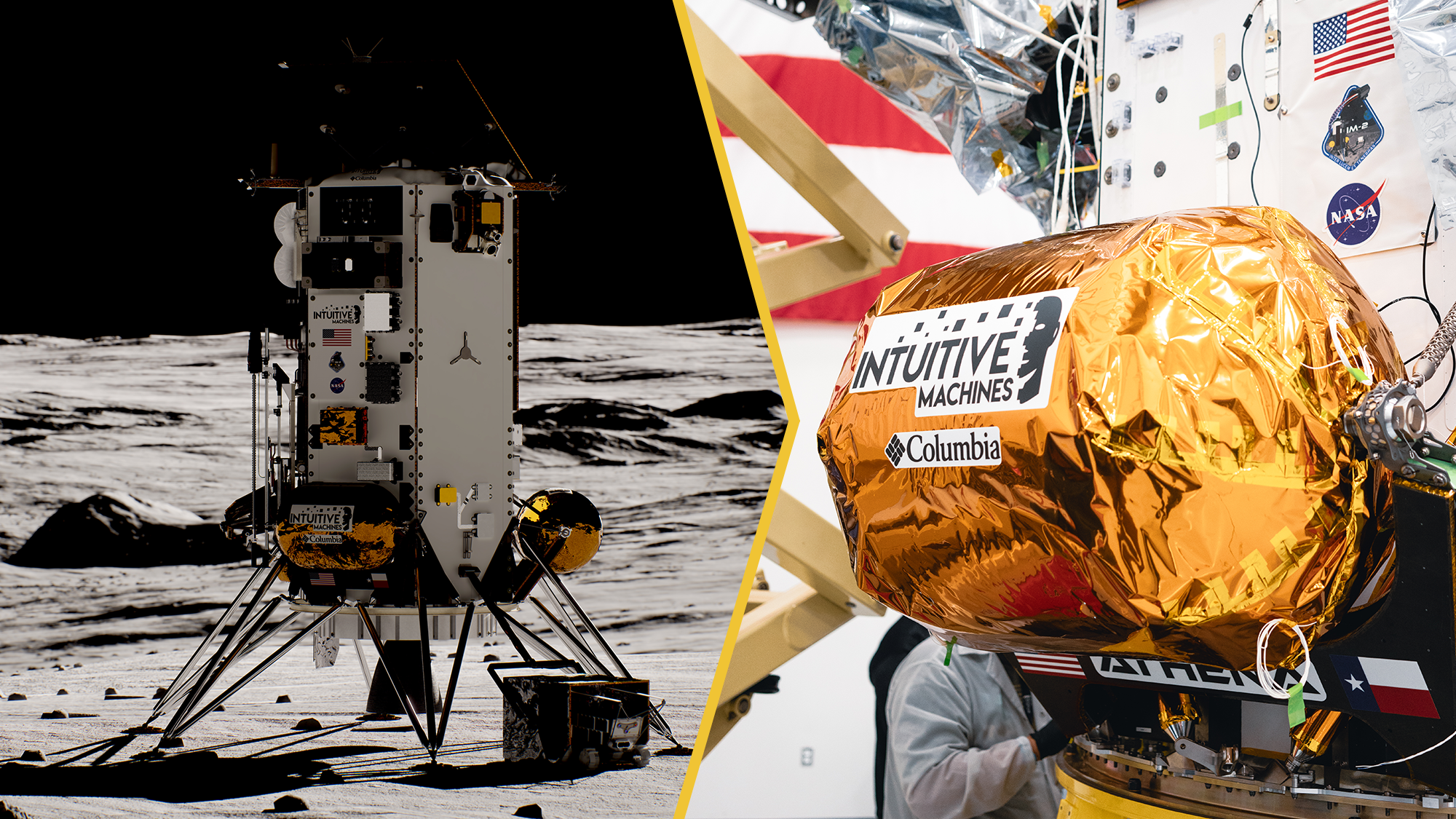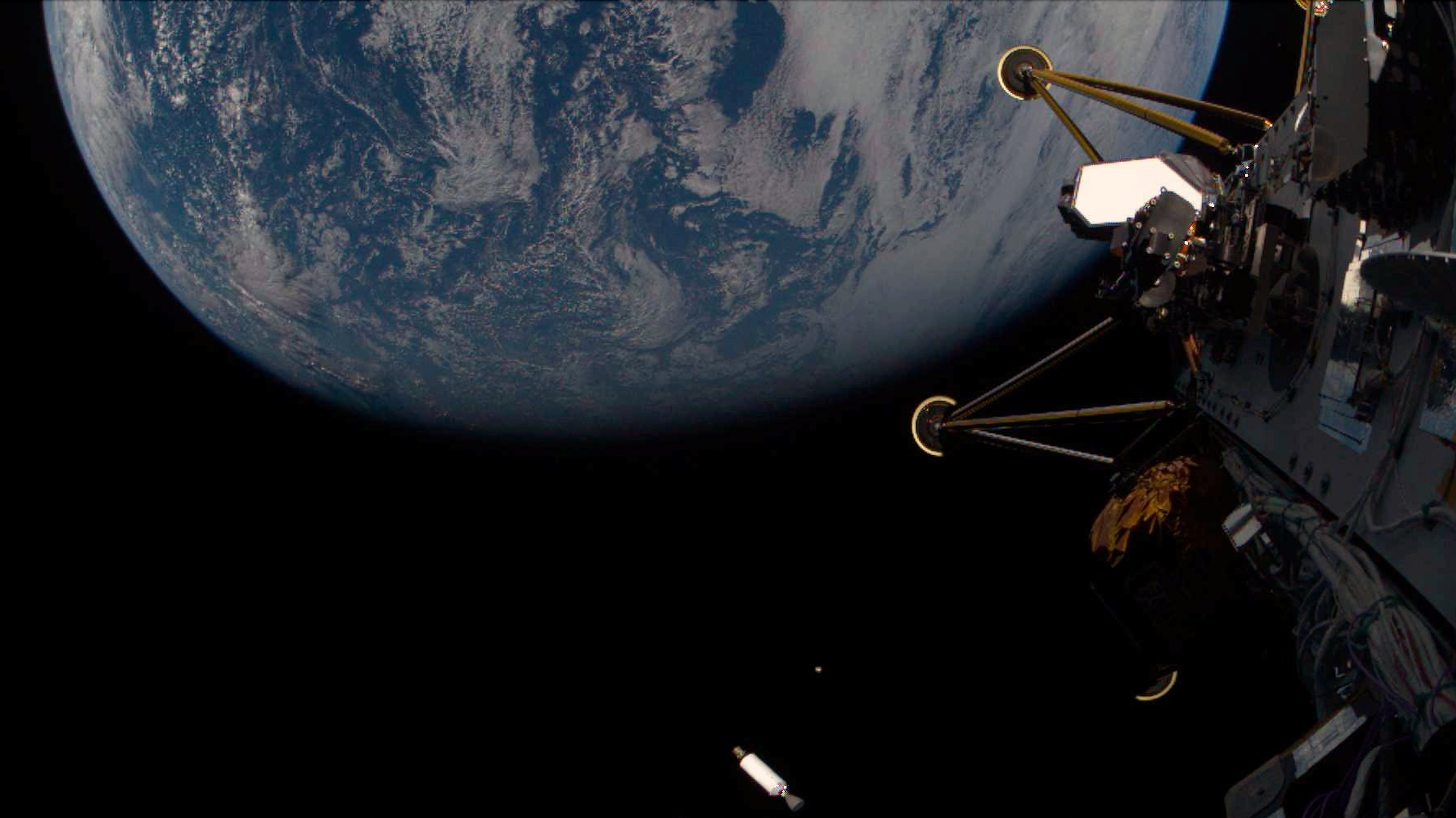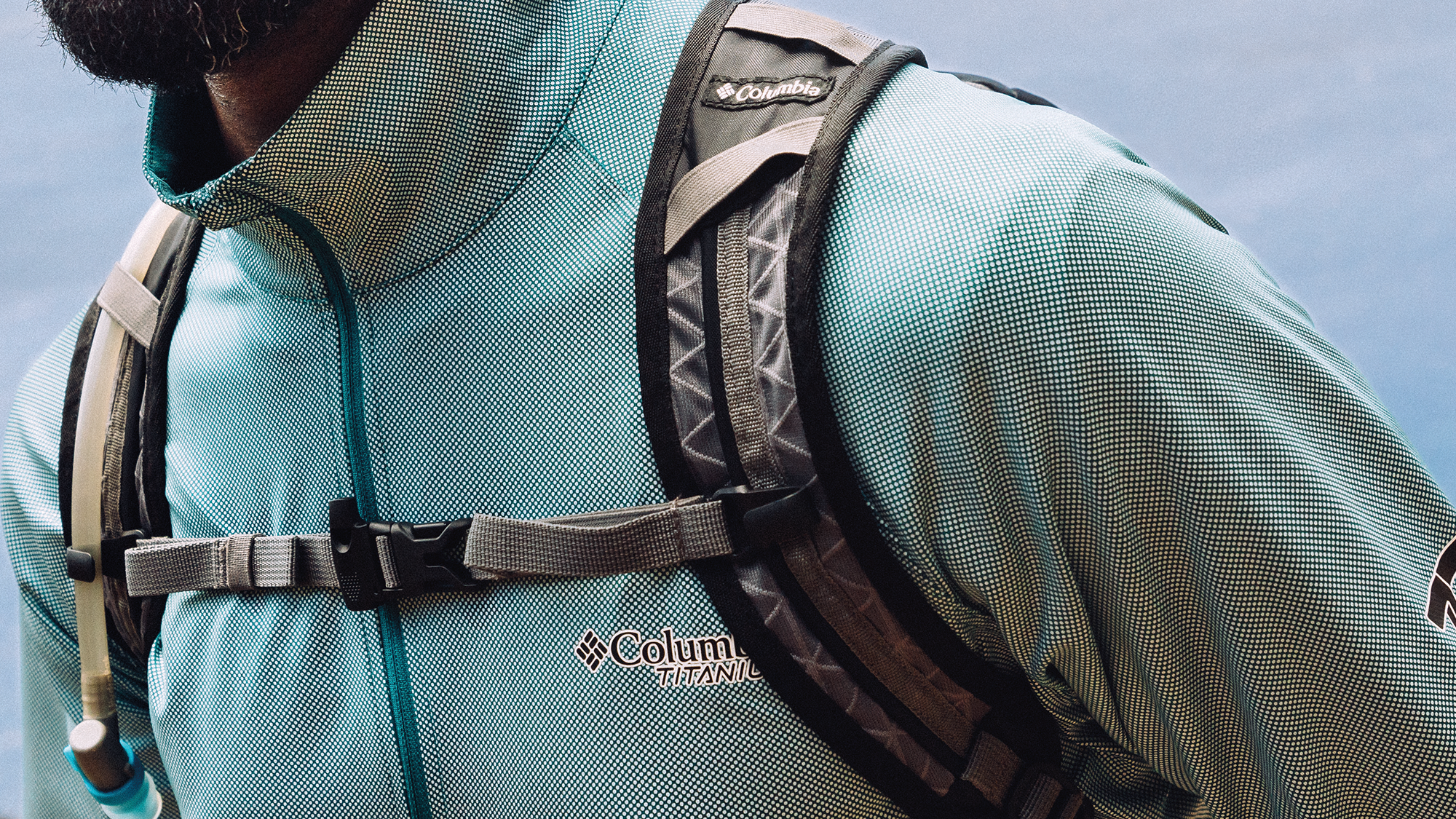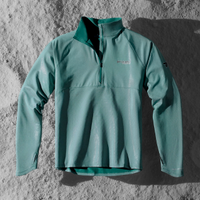Columbia Sportswear’s UV-blocking technology just landed on the moon, and I spoke to the materials scientist who designed it
It's the 87-year-old apparel company's second lunar landing

How many people can say their technology landed on the moon? As you’d expect, not many, but Dr. Haskell Beckham, Columbia Sportswear’s vice president of innovation, can say products developed in his textiles lab have done it twice.
Back in 2023, I reported on Columbia Sportswear’s Omni-Heat Infinity insulation fabric being outfitted on what ultimately became the first American spacecraft to successfully land on the moon in more than 50 years.
That spacecraft, better known as Intuitive Machines’s Nova-C IM-1 lunar lander, brought back learnings that inspired Columbia Sportswear to continue its collaboration with the private Houston-based science exploration company.
“We recognized pretty quickly that the materials we've developed for our outerwear and other garments originally inspired by the NASA space blanket, might have a place to help that lander or protect that lander from the extreme temperatures in space and on the lunar surface,” said Dr. Beckham, speaking with me ahead of the Nova-C IM-2’s expected landing.

Want to learn more about the Intuitive Machine's Nova-C IM-2 lunar lander? Check out Tom's Guide's sister website, Space.com, for complete coverage of the landing status as well as images of Earth the ship captured from space.
When planning for this second mission, which did officially land on the moon’s south pole yesterday (March 6), Dr. Beckham proposed to his counterparts at Intuitive Machines that a different material, first released in 2017 for Columbia Sportswear consumer apparel, could actually protect a spacecraft from the sun’s harmful UV effects better than existing solutions.
“One of the things we learned in terms of the first spacecraft was that parts of that spacecraft got hotter than Intuitive Machines] wanted it,” Dr. Beckham said. “So I had told them during the course of working with them about another material called Omni-Shade Sun Deflector.”
Although Omni-Shade Sun Deflector had to undergo special testing to see whether it could withstand space’s extreme temperature sweeps, it turned out that Intuitive Machines “could essentially use it as is.”
Sign up to get the BEST of Tom's Guide direct to your inbox.
Get instant access to breaking news, the hottest reviews, great deals and helpful tips.
Omni-Shade Sun Deflector: Suitable for space and sportswear
Omni-Shade Sun Deflector is a combination of ceramic particles and a textile material that both deflects the sun and reduces heat build up. The “Omni-Shade” portion of the material name refers to the fabric construction that's capable of blocking UVA and UVB radiation from the sun.
Meanwhile, the “Sun Deflector” half is the white titanium dioxide dots that reflect solar energy and keep what it’s protecting cool, making the fabric as a whole an excellent choice for outerwear worn in the summertime or sunnier climates.

In fact, the exact material is currently available in products like the Summit Valley Half-Zip, available in both men’s and women’s sizing starting at $85. (Neat little side note, all the clothing listed on Columbia’s website featuring Omni-Shade Sun Deflector include “now testing in space” in the product description.)
The Columbia Sportswear Summit Valley Half-Zip features the same Omni-Shade Sun Deflector technology that was used in the design of the Intuitive Machine's Nova-C IM-2 Athena lunar lander.
For those wondering why a lunar lander needs heat protection when space is typically associated with being cold due to the lack of atmosphere, the sun feeds a vacuum that radiates heat on objects in the line of sight.
So think of it as basking directly in the sun here on Earth, enjoying your favorite outdoor activities on a hot day. Omni-Shade Sun Deflector should be able to let you stay outside safely (as far as your skin is concerned) for longer periods of time.
Columbia Sportswear's technology 'reflects the extreme temperatures' of space
“Intuitive Machines fell in love with the material,” Dr. Beckham said. “They've integrated it fully into some of the multi-layer insulation blankets they use on the lander, it’s specifically used on the entire top deck of the lander, protecting avionics and batteries.”
If you look at almost any spaceship, you’ll notice that there are parts that are painted white. According to Dr. Beckham, that paint is super expensive, has a very limited shelf-life, and it's challenging to apply in “a sort of a uniform” manner.
“People are often shocked at how much science goes into what we do."
— Dr. Haskell Beckham, Columbia Sportswear
“Omni-Shade Sun Deflector kind of is a potential replacement for all white paint,” Dr. Beckham said. “With a material like this, we've basically eliminated that whole issue about limited shelf life. This is a lot more cost effective to use, and turns out, it actually performs better. So we're excited about that, and they're super excited about that, too.”
What’s more, Omni-Heat Infinity is still used on the second lander. It’s integrated into a multi-layer insulation protecting the helium tanks. The tanks, responsible for pressurizing the lander’s fuel tank, can’t get too cold.
In Dr. Beckham’s words, “it's used in exactly the same way that we use it in our outerwear and other winter garments."
“I think it's kind of cool that we've got both winter technology and summer technology aboard that spaceship, which completely reflects the extreme temperatures that spaceships and lunar surfaces and terrestrial surfaces experience in space,” Dr. Beckham said.
As for what’s next, Dr. Beckham noted that being involved in initiatives that are “technically difficult” such as space travel typically generate benefits for regular consumer products. Even if, in Columbia Sportswear’s case, the consumer products did technically come first.
“People are often shocked at how much science goes into what we do,” said Dr. Beckham. “We've got a team of scientists and engineers and material developers and product developers and designers who come up with these platform technologies to allow us, Columbia, to do our own innovation in our mission to unlock the outdoors for everyone.”
More from Tom's Guide
Kate Kozuch is the managing editor of social and video at Tom’s Guide. She writes about smartwatches, TVs, audio devices, and some cooking appliances, too. Kate appears on Fox News to talk tech trends and runs the Tom's Guide TikTok account, which you should be following if you don't already. When she’s not filming tech videos, you can find her taking up a new sport, mastering the NYT Crossword or channeling her inner celebrity chef.
You must confirm your public display name before commenting
Please logout and then login again, you will then be prompted to enter your display name.


